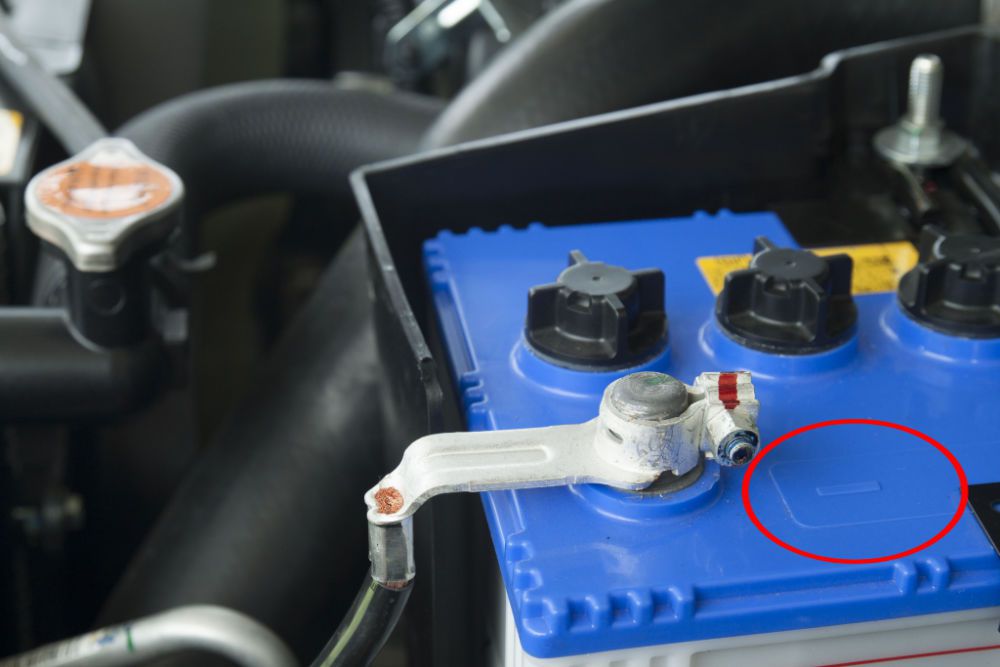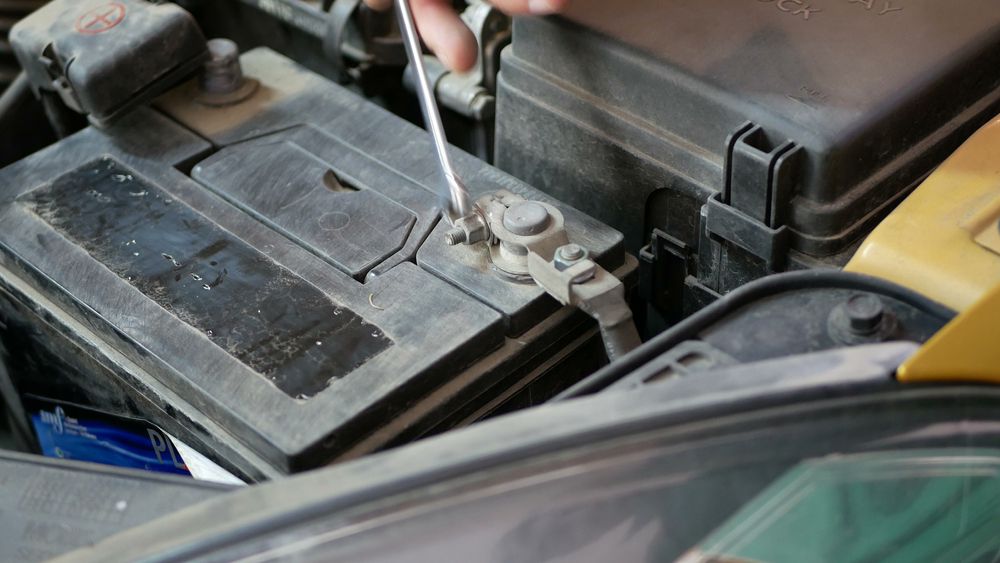An alternator keeps the vehicle's battery charged and helps power the
vehicle's various electrical systems by converting mechanical energy into
electrical energy.
To test an alternator by disconnecting the battery you simply remove the
negative battery cable from the battery's terminal with the engine running.
If the vehicle's engine stutters or stalls, the vehicle's alternator is
likely malfunctioning.
A failing alternator is a serious mechanical issue that needs to be fixed
immediately or it will leave you stranded.
Although not recommended in modern vehicles due to risk of damaging the
complex electrical and computer systems, there is an easy method to quickly
narrow down your electrical problems to alternator failure.
 The negative battery terminal on a car battery.
The negative battery terminal on a car battery.
How To Test Alternator By Disconnecting Battery
Before testing the alternator by disconnecting the battery you should
double check that there are no loose or corroded electrical connections,
faulty electrical components, or a loose serpentine belt, all of which
could cause symptoms that mirror that of a bad alternator.
Once your sure the problem is not caused by an related electrical component
or system it's time to test the alternator by disconnecting the negative
battery cable.
1) First Open The Hood And Locate The Battery
With the vehicle's engine running, pop the vehicle's hood, find the
battery, and identify the batteries negative terminal.
2) Loosen The Cable Clamp On The Negative Battery Cable
The negative cable will be clamped to the battery terminal and you'll need
either a screwdriver or a wrench to loosen the clamp.
With the engine running, loosen and remove the clamp while listening for
any changes in how the vehicle idles.
 Disconnecting the negative battery cable from a car battery.
Disconnecting the negative battery cable from a car battery.
3) Listen And Monitor What The Engine Does With A Disconnected Battery
Cable
If the engine stalls out, stumbles or stutters with the battery
disconnected, you most likely have a bad alternator, as the engine is not
receiving enough electricity from the alternator to make up for no power
from the battery.
If there is no change in the vehicle's idle it's a sign that your
alternator is strong, and you need to look for other problems or get your
vehicle checked by a professional mechanic.
Which Battery Terminal Do You Disconnect To Test The Alternator?
A car battery has two terminals, a negative and a positive terminal. The
battery terminals are usually on the top of the battery but they are
sometimes located on the side of the battery.
To test a battery by disconnecting the battery you have to disconnect the
negative battery cable from the negative battery terminal while the car's
engine is running.
If the car stalls or stumbles when you disconnect the battery cable it
probably means you there is a problem with the car's alternator.
 Disconnecting the negative battery cable while the car is running.
Disconnecting the negative battery cable while the car is running.
What Happens If I Disconnect The Battery While The Car Is Running?
If you disconnect a car battery while the car's engine is running you risk
damaging the car's electrical system, as well, there is a high risk of
getting a serious shock.
Can You Test An Alternator By Removing The Positive Battery Cable?
You should not test an alternator by disconnecting the positive battery
cable due to a high risk of electrocution.
If you do want to quickly test your car alternator, and you are confident
that you won't damage any of your car's electrical systems, you should
disconnect the negative battery cable from the car battery.
How Do I Know If My Alternator Is Bad Without A Multimeter?
The best way to test an alternator is with a multimeter, but if you don't
have a multimeter handy, there are a couple other methods that you can try
that will help you diagnose a faulty alternator.
You can test an alternator by disconnecting the negative cable as described
above, or you can use a screwdriver.
To test an alternator with a screwdriver, place the screwdriver near the
alternator's front pulley with the engine running. If the alternator is
working properly, you should feel a magnetic pull working on the
screwdriver.
How Can I Test My Alternator Without Tools?
Testing an alternator accurately without any tools whatsoever is difficult,
if not impossible. However, by looking at symptoms you can oftentimes
narrow down the vehicle's electrical problems down to the alternator.
To test an alternator properly, you should have a multimeter, however you
can also you a screwdriver to check the magnetic pull, or disconnect the
negative cable.
Symptoms Of A Bad Alternator?
Over time alternators go bad due to normal wear and tear, although they can
fail prematurely if they have to
work too hard to charge a malfunctioning battery
over an extended period of time.
Symptoms of a bad alternator include a dead battery, malfunctioning
accessories, and
dim headlights
.
Conclusion
If you suspect that the alternator is failing or has failed, you can test
it quickly by disconnecting the negative battery cable with the engine
running. If the motor stalls it means that the alternator is not working
properly.
If your not 100% confident in your abilities it's best to get your
alternator checked, as well as the battery checked by a professional
mechanic.